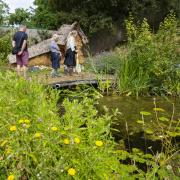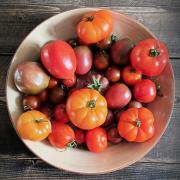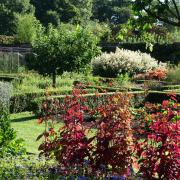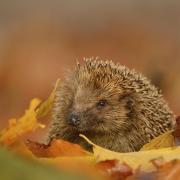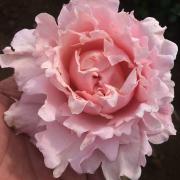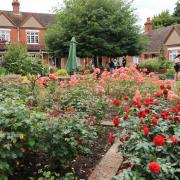Ed Berger investigates the curative properties of those two winter warmers, mustard and horseradish
Ed Berger investigates the curative properties of those two winter warmers, mustard and horseradish
With central heating, adequate food and warm clothing we can easily cope with the cold and damp winter weather, but things were very different for our Anglo Saxon forefathers, huddled around smoky fires, eating old food, with no windows or boots to help keep out the cold. One can only imagine the coughs, colds and digestive problems that made 40 years a ripe old age. Although best known now as condiments, mustard and horseradish were highly valued medicines for our ancestors. They were easily cultivated or gathered from the fields and hedgerows and were used to counteract winter coughs, colds, aches and chills. Although their medicinal properties have gradually been forgotten, our enjoyment of mustard and horseradish with hearty winter meals harks back to their original use and they remain an important safeguard for winter health.
Digestive supportThe pungent compounds in mustard and horseradish are anti-microbial, so helping to destroy the pathogenic organisms found in our ancestors’ stale winter provisions, but they also strengthen digestion, which may explain why we still enjoy them with a hearty Sunday roast. A horseradish preparation for weak digestion and rheumatism was listed in the British Pharmacopaeia under the name ‘Compound Spirit of Horseradish.’ This consisted of fresh slices of horseradish root, orange peel and nutmeg infused in wine vinegar. This delicious sounding remedy was prescribed after meals at a dose of 1-2 teaspoons in water.
Respiratory supportMustard and horseradish have an affinity for the respiratory system, the most vulnerable system during the winter. When we eat strong mustard or horseradish, they immediately open the sinuses, helping to clear nasal congestion in colds and catarrh. If taken in sufficient quantity, these hot pungent herbs also induce a sweat (known as diaphoresis) – a strategy used in all medical traditions for ‘breaking’ fevers and speeding the healing of colds and flus.
External useMustard and horseradish were also important external medicines, used to make warming hand and foot baths and applied to aching joints. Indeed the British Pharmacopoeia contained a recipe for ‘Compound Liniment of Mustard’ consisting of mustard seeds diluted in spirit of camphor for the external treatment of chilblains and rheumatic pain. It is believed that mustard was also highly valued by the Anglo Saxons for bronchial problems, made into a plaster and applied to the chest to break up catarrh. According to the great English herbalist Nicholas Culpeper, the scraped root of horseradish could be used interchangeably with mustard seeds for chest packs. However do not try applying pure mustard or horseradish to the skin at home as the pungent compounds will blister the skin if left on for too long.So, as you can see, mustard and horseradish are not just a culinary sensation but ideal medicines during the winter season and meant the difference between health and sickness for our forefathers. Add an extra dollop of mustard or horseradish sauce to your Sunday roast to keep you warm and healthy this winter.
Ed Berger has been practising herbal medicine for 12 years and lives in Suffolk. He also teaches herbal medicine for the College of Naturopathic Medicine and is a keen plantsman, growing many medicinal herbs in his woodland garden. To discuss any aspect of herbal medicine including herb walks, herbal garden design or to arrange a consultation please contact Ed on 07931 797148 or info@edberger.co.uk
It is thought that mustard was first introduced to this country by the Romans who pounded the seeds and steeped them in new wine. Indeed the name ‘mustard’ comes from ‘mustum’ (the newly fermented grape juice) and ‘ardens’ (burning). The Romans especially valued mustard for its ability to invigorate the body and stimulate the brain.
MAKE YOUR OWN
Horseradish sauceGrate a fresh horseradish root into a mixing bowl, stir in 1 teaspoon vinegar, 2 teaspoons lemon juice, 4 tablespoons of double cream, a teaspoon of mustard powder and a pinch of salt and pepper.
MustardPlace 1/3 cup mustard seeds in a bowl with 1/3 cup cider vinegar, 3 tablespoons water and a pinch of salt. Cover and leave for 24 hours, then blend to desired consistency. For an extra kick you can add 3 teaspoons of grated horseradish to the mixture.
Both sauces will keep well for a month if refrigerated.



